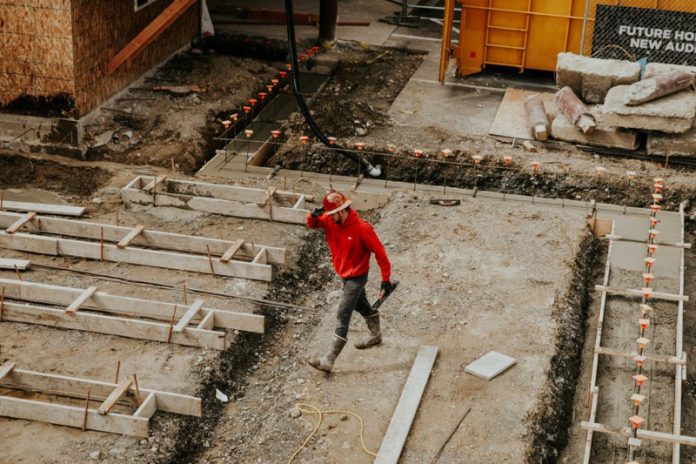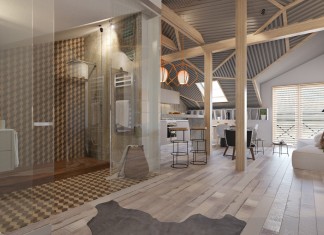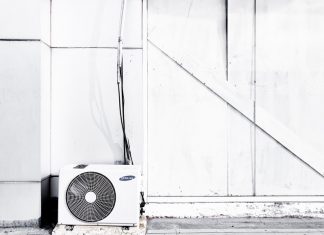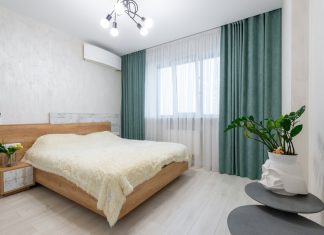A residential roof is essential to any home and is more than just aesthetic. Both commercial and residential roofs must be practical. Think of it this way: a roof is meant to protect you and your family from harsh weather conditions like wind and rain.
Imagine moving to a new home with your family in the middle of winter. When it snowed, you realized that the roof could not support the weight. Unfortunately, this caused water damage and you had to pay the cost of extensive repairs.
The scenario emphasizes the crucial role of a well-maintained roof. This not only improves the overall aesthetics of the home, but also adds value and increases its appeal in the market. For more on the value a quality roof adds, click here to read about the additional benefits of a new roof.
On the other hand, a neglected or poorly maintained roof can cause several problems such as leaks, water damage and mold growth. Not only do these problems require expensive repairs, but they also put your health and safety at risk. Ensuring the quality of your residential roof is an important investment in ensuring the structural integrity of your home.
A comprehensive guide to residential roofing systems
A residential roof is important to protect the home from weather conditions. There are a variety of roofing materials to choose from, and signs of damage should be noted.
Homeowners can do it themselves or hire a professional. In any case, regular maintenance is necessary to extend the life of the roof. The same goes for commercial roofs.
Asphalt shingle
Asphalt roofing is the number one roofing material in the United States, and for good reason. They are affordable, easy to install and available in a wide range of colors and styles to suit every taste. With proper maintenance, they can last up to 30 years, making them a reliable and durable choice for your roof.
Metal roof
Metal roofs are increasingly popular due to their longevity and energy efficiency. Although its initial cost is higher than asphalt shingle, the investment will pay off in the long run.
A guaranteed lifespan of up to 50 years or more means the material is a durable and long-lasting choice. In addition, its inherent resistance to fire, wind and hail damage provides an additional layer of protection and peace of mind in changing weather conditions.
Clay and concrete slabs
Clay and concrete tiles have gained significant popularity, especially in warmer parts of the United States, due to their ability to reflect sunlight and maintain a cooler indoor environment. This feature not only increases home comfort, but also increases energy efficiency. Known for their excellent durability, these bricks can last up to 50 years and provide a durable roofing solution that will stand the test of time.
It is worth noting that clay and concrete tiles bring elegance and timeless appeal to the architectural aesthetic of any home. Their distinctive profiles and colors make it possible to create a unique and visually exciting roof design.
However, due to their weight, clay tiles require a strong structural support system. This should be considered when considering them as an option for your residential roofing project. In older homes, house columns and related structural components should be examined to determine if they are adequate to support the weight of clay and concrete slabs.
Although clay and concrete tiles may require a slightly higher initial investment and careful installation, their longevity, aesthetic appearance and exceptional thermal benefits make them an attractive choice for homeowners looking for a combination of style and performance in their roofing solutions.
Wooden shingle
It presents apartment owners with an exciting and organic roofing option that exudes natural beauty and timeless charm. These tiles give your home a warm, rustic aesthetic and character that blends seamlessly with a variety of architectural styles.
One of the important advantages of wooden shingles is their ability to create a harmonious connection between your apartment and the surrounding environment. A wood shingle roof has a potential lifespan of up to 30 years, which means it can last a considerable amount of time, allowing you to enjoy its unique appeal for a considerable period of time.
However, most residential roofers say that their longevity is closely related to proper maintenance. Regular maintenance is essential to prevent potential problems such as rot, mold and insects. It is very important that protective covers ensure adequate ventilation, which can significantly extend the life of wooden shingles, preserving their natural beauty.
Although wood shingles require care and attention that may exceed other roofing materials, the rewards are well worth the effort. Exceptional aesthetics combined with a duty of care create a roofing solution that adds natural elegance to your living space and is a testament to lasting beauty and craftsmanship.
Identify and repair signs of a damaged roof
Commercial and residential roofers often recommend that their clients inspect the roof for damage. It is very important to check your roof regularly for damage to avoid costly repairs. But an inspection is even more important after a recent hurricane, storm or hailstorm.
Here are some common signs that your roof needs repair:
Leaks
Leaks are the most obvious sign that your roof is damaged. If you notice water spots or discoloration on your roof or walls, this is a sign that your roof is leaking. This problem must be addressed immediately to prevent further damage.
Most residential and commercial roofing experts offer emergency services, which means they can be at your home within hours to fix the problem. However, if the cause of the leak is serious roof damage, it will require extensive repairs or even roof replacement.
Missing or damaged shingles
Missing or damaged shingles can compromise the integrity of your roof and make it more susceptible to leaks and water damage. Missing or damaged shingles must be replaced immediately.
Homeowners can easily replace a shingle or two with basic tools. This applies to both residential and commercial roofs. However, the latter may have other steps depending on the type of roof and how difficult it is to access the roof.
You must remember that climbing onto a high roof to replace shingles can be dangerous. That’s why it’s important to prepare with the right safety gear, safety harnesses, and tie offs.
Mold or mildew
Mold and mildew grow when excess moisture accumulates on roof surfaces, regardless of whether it is a pitched or flat roof. This excess moisture can come from a number of sources – rainwater that doesn’t drain off the roof properly, moisture condensation inside the building, or roof membrane leaks or stains.
Prolonged humidity allows mold spores, which are always in the air, to germinate and grow. Mold often begins to appear as dark spots or wrinkles on the surface of the roof. As it spreads, it can form shaggy or slimy colonies of different colors, such as black, green, brown, or gray.
There is also a type of mold that usually looks powdery or velvety and varies in color from gray, brown, black, white, or purple. Click here to read more on mold.
Health risks from mold exposure include allergic reactions, difficulty breathing and irritation. Mold can also wear down roofing materials over time. The longer moisture remains on the roof and mold is allowed to grow, the more damage it can cause.
Prolonged moisture can warp the roof deck and damage the roof coverings. Choosing the right roofing contractor for residential construction is important to ensure quality work and customer satisfaction.
Here are some factors to consider when choosing a roofing contractor:
Experience and knowledge
Choose a roofing contractor (https://www.irs.gov/businesses/) who has the experience and knowledge of your particular roofing material and style. You want to find one with a verifiable portfolio of successful residential projects.
License and Insurance
A roofing contractor must have a valid license and insurance to protect you and your property from accidents or damage.
Conclusion
Residential roofing services are beneficial because they ensure the safety, integrity, and longevity of a home. Professional roofing ensures quality installation, repairs, and maintenance, safeguarding the house against weather damage, leaks, and structural issues. It enhances property value, offers peace of mind to homeowners, and maintains the aesthetic appeal of the house.



















